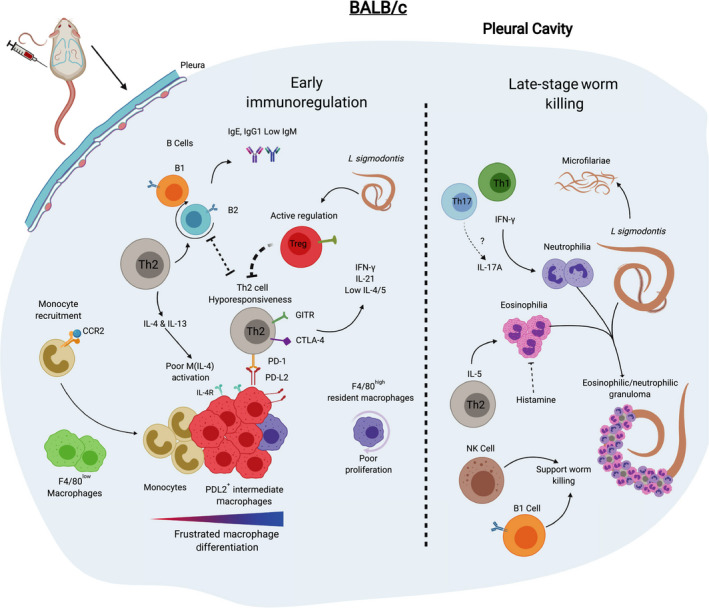FIGURE 4.

Immune response to L sigmodontis infection in BALB/c is characterized by immunoregulation and delayed worm killing. In infected BALB/c mice, there is a relatively weaker accumulation of immune cells in the pleural cavity in comparison with C57BL/6 mice. The immune response is initially Th2‐biased with associated eosinophilia and B‐cell production of IgG1 and IgE. The T‐cell response shifts towards a hyporesponsive state by day 40 p.i. Th2 cells express GITR, CTLA‐4 and PD‐1 which facilitate worm survival. Regulatory T cells also limit T‐cell responses and worm killing. In BALB/c mice, there is comparatively less F4/80high macrophage proliferation than in C57BL/6 mice and these are instead outnumbered by incoming CCR2‐dependent monocytes which develop into PD‐L2+ macrophages with a phenotype that is intermediate between F4/80low and F4/80high macrophages. Sexually mature L sigmodontis female worms produce mF beginning around day 55 p.i., and late‐stage (day 80 p.i. onwards) worm killing occurs via the gradual encasement of worms in granulomas. B1 and NK cells play a supporting role in worm killing. IFN‐γ supports neutrophilia and granuloma formation. IL‐5 and eosinophils are required for worm killing in BALB/c mice
